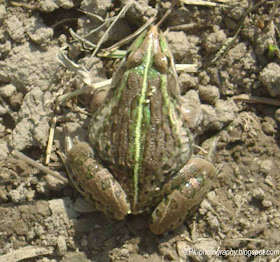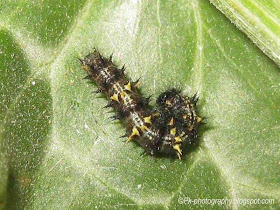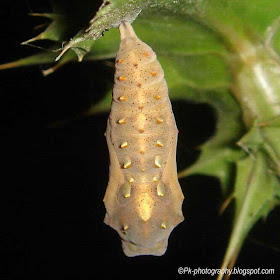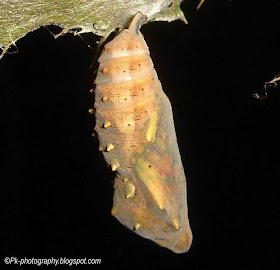Quaid-e-Azam's Personal Belongings
A photography blog that focus on Pakistan natural beauty, people, culture heritage, customs and traditions, historical places, travel destinations, wildlife: flora and fauna.
Pages
▼
Quaid-e-Azam's Personal Belongings
The 134th birth anniversary of the Father of the Nation Quaid-e-Azam Muhammad Ali Jinnah (Founder of Pakistan) has been celebrated on Sunday, 25th December 2010, with great enthusiasm and national spirit. To present tribute to our beloved leader, I decided to share some pictures of Quaid-e-Azam's personal use items, displayed at Lahore Museum.
Chapli Kebab
Chapli Kebab/Kabab is a traditional spicy dish of Pakistan. It's a favorite dish of the people of Khyber Pakhtunkhwa. Though chapli kebab are prepared through out the year at the kebab restaurants, however it's considered a dish of winter. There are many kebab restaurants in Khyber Pakhtunkhwa, which are famous for their tasty chapli kebab, however the chapli kebab of Swabi has no match in taste. It's prepared from ground meat, maize flour, onion and tomato together with some spice including coriander seeds, anardana, chili, ginger, garlic and zeera . Knowing about ingredients don't mean that one will prepare kebab as delicious as by the experts at kebab restaurants.Therefore people always prefer to buy kebab from these restaurant instead of preparing at home. Its preparation needs expertise and skills and these skills transfer from race to race.
Chapli Kebab Restaurant
Chapli Kebab
Frog Fruit-Phyla nodiflora
The Frog Fruit (Phyla nodiflora or Lippia nodiflora), is flowering, broadleaf plant in the Verbenaceae family. It grow wildly along field sides. The vine like branches of the plant grow up to 3 feet long. Dense growth of the plants present a very beautiful view and serve as a ground-cover. I like this plant because it's one of the host plants of Peacock pansy butterfly in our area. The inflorescence consists of a purple-colored center encircled by small white-to-pink flowers. Other common names of frog fruit are sawtooth fogfruit, turkey tangle and matchweed.
Frog Fruit-Phyla nodiflora
(09/06/2011) My mother brought some frog fruit plants to home. I ask her, what will she do with it and she told me that it is a medicinal herb and is excellent remedy for jaundice. In Urdu its called "Jal buti" and in domestic language Pashto it is called "Aspa buti".Old House Borer-Hylotrupes bajulus
The Old House Borer (Hylotrupes bajulus) is a species of wood-boring beetle in the family Cerambycidae (longhorn beetles), a group of Coleoptera insects also known as “European Old Houses Borer”. The main characteristic of this family is the long slender antennae. The adult has black color and is 8-20mm long. It is remarkable that the male is much smaller than the female. Infestation starts from the trees, but it can also be found in treated wood. It infests wood from pine and fir trees. Larva can live in wood from 3 to 10 years, reaching 200mg in weight and causing extended damage. Large oval holes are a sign of the infestation.
Old House Borer-Hylotrupes bajulus
 |
| Old House Borer (Hylotrupes bajulus) Larva |
Desert Locust-Schistocerca gregaria
I identified the locust species below to be a Desert Locust (Schistocerca gregaria). If my identification is wrong feel free to correct me. The desert locust is a species of short-horned grasshoppers in the family Acrididae. They are potential pest of agriculture crops and can damage the crops in a large scale particularly when they form swarms. Personally I never observed their swarm, however I heard my elders talking about locust swarms in our area and their large scale damage to agriculture crops and even trees. Their controlling method was very interesting. To control the locusts the whole community used to work together. Initially they used to dig a large pit and then used to direct the locust swarm toward the pit. After collecting a large number of locusts in the pit, they used to fill the pits with excavated earth.
Desert Locust (Schistocerca gregaria) Nymph
Desert Locust (Schistocerca gregaria) Adult
Rana tigrina-Indian Bullfrog
Rana tigrina is the old name of species Hoplobatrachus tigerinus, commonly known as the Indus Valley Bullfrog or Indian Bullfrog. It's a large species of frog in the subfamily Dicroglossinae, family Ranidae, found in South Asian countries, including India, Pakistan, Bangladesh and Afghanistan. It's found in freshwater marshes, ditches, ponds, and shallow lakes. It's named as bullfrog because of its large size and loud call.
Indian Bullfrog-Rana tigrina
Cucurbit Leaf Beetle-Aulacophora indica
Cucurbit Leaf Beetle (Aulacophora indica) is a small orange color leaf beetle (6 to 8 mm long) in the family Chrysomelidae, subfamily: Galerucinae, tribe: Luperin. It's a pest of plants in the family Cucurbitaceae commonly known as melons, gourds or cucurbits. Because of its feeding preference it is known by a number of common names such as cucumber beetle, squash beetle, pumpkin beetle and melon beetle etc. It's grub feed on the roots and underground part of host plants.
Cucurbit Leaf Beetle-Aulacophora indica
Cucurbit Leaf Beetle Mating
Markhor-National Animal of Pakistan
Markhor (Capra falconeri) is the National Animal of Pakistan. It's a species of wild goat in genes Capra, subfamily Caprinae, family Bovidae. It's a high altitude mountain goat, found between 600-3,600 meters in elevation. In Pakistan it's found in Gilgit-Baltistan, Hunza-Nagar Valley, northern and central Pakistan, and Azad Kashmir. It spends summer at higher altitudes than winter. In the winter months it moved down from high altitudes to lower altitudes to avoid extrems cold.
Markhors are active during daylight and twilight. They are lively and quick and can easily climb and jump over rocky landscape. Males are generally found singles while females gather into group of up to 9. The number of mature Markhors is less than 2,50 and is grouped as endangered species by International Union For Conservation of Nature (IUCN).
Markhors are active during daylight and twilight. They are lively and quick and can easily climb and jump over rocky landscape. Males are generally found singles while females gather into group of up to 9. The number of mature Markhors is less than 2,50 and is grouped as endangered species by International Union For Conservation of Nature (IUCN).
Markhor-National Animal of Pakistan (Model)
Painted Lady Butterfly Life Cycle
The Painted Lady-تتلی (Vanessa cardui) is a medium size butterfly having a wing-span of about 55-60 mm, in family Nymphalidae (brush-footed butterflies or four-footed butterflies). I have already posted some pictures of Painted Lady Butterfly. Today I'm going to share the pictures of four stages of painted lady butterfly life cycle. Observing and documenting the different phases of a butterfly life cycle is really a fun.
Painted Lady Butterfly Life Cycle
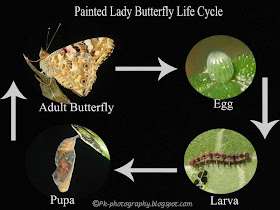
Eggs
The Female painted lady butterfly lays pale green eggs on the upper surface of the host plant leaves. The eggs are laid individually and hatch in about 4 to 6 days. The host plants in our area are milk thistle, Canadian thistle and common mallow.
Painted Lady Butterfly Eggs Pictures
Larva/Caterpillar
When the caterpillar hatches, it eats the egg shell as its first meal. Then it starts eating the leaf of host plant upon which the egg had been laid. The caterpillar passes through four different instars before pupation. This stage takes about 10 days to complete.
Painted Lady Butterfly Larva/Caterpillar Pictures
Pupa/Chrysalis
At the final molt the caterpillar crawls to a safe place and hangs upside down from a branch or leaf with the help of silken thread. In about 24 hours the skin splits down the back and a grayish-pink color pupa/chrysalis appears, which then turns golden. On maturity the pupa become transparent and the wings of butterfly become visible. The pupa takes about 7 days to turns into a butterfly.
Painted Lady Butterfly Pupa/Chrysalis Pictures
Butterfly
When the butterfly emerges from the pupa, its wings are wet and folded. In about 10 minutes the wings open and become straight. Then it needs about an hour more to dry and harden the wings. In drying process it does not open wings, so I had to disturbed it to take an open wings shot.
Painted Lady Butterfly (Vanessa cardui)
Painted Lady Butterfly Life Cycle Slideshow
Nishan-e-Haider
Nishan-e-Haider is the highest military award given by Pakistan. It ranks top in all military and civil awards. It's awarded posthumously to soldiers for combat heroism, irrespective of their ranks. It is made from the surrendered enemy gun metal. It has been awarded to 10 military personals since the independence of Pakistan in 1947, including Captain Muhammad Sarwar Shaheed, Major Muhammad Tufail Shaheed, Major Raja Aziz Bhatti Shaheed, Major Muhammad Akram Shaheed, Pilot Officer Rashid Minhas Shaheed, Major Shabbir Sharif Shaheed, Sawar Muhammad Hussain Shaheed, Lance Naik Muhammad Mahfuz Shaheed, Captain Karnal Sher Khan Shaheed and Havildar Lalak Jan Shaheed.
Nishan-e-Haider (model)
Bengal Monitor Lizard
Bengal Monitor Lizard (Varanus bengalensis) also known as Common Indian Monitor, is a monitor lizard in the family Varanidae, found in South Asia. This large lizard is mainly terrestrial and grows to about 175 cm from the tip of the snout to the end of the tail. It feeds on arthropods, frogs, lizards, snakes, birds and eggs etc. Although large monitors have few predators apart from humans who hunt them for meat, skin or fats to extract oil, which is used in folk medicine, juvenile have many predators. It lives in agricultural land and forests, however can also be found in human population, where it spends most of the time in cracks and gapes of walls. They run very fast and.can climb trees and walls and are good swimmers. I think it would be more suitable to name it "Desk Monitor Lizard", as I found it in a desk at the school. In Urdu it is called Goa.
Special thanks to Mr Nausherwan Ahmed of Wild Life of Pakistan, who helped me in identification of the species.
Juvenile Bengal Monitor Lizard (Varanus bengalensis)
Special thanks to Mr Nausherwan Ahmed of Wild Life of Pakistan, who helped me in identification of the species.
Striped Pierrot Tarucus nara Life Cycle
The Striped Pierrot (Tarucus nara) is a small butterfly (wingspan: 24 - 28 mm) found in South Asia that belongs to the Lycaenids or Blues family.
The caterpillars of this species feed on Zizyphus sp. and are attended by ants. The caterpillars occur in two colors i.e pale green and dark green. The caterpillar reach a maximum length of about 14 mm. The larva stage last for about 12 days.
On maturity the caterpillar stops eating and attache itself to a leaf head down, supported by a silken grid at the center. The pupa has a length of about 8-9mm. Like caterpillars the pupa also occur in two colors i.e pale green and dark green. On the 6th day the pupa turns transparent, revealing the new butterfly inside and after some time the adult butterfly enclosed itself. Before flight, the newly emerged butterfly takes some time to inflating its wings with blood and letting them dry.
Striped Pierrot (Tarucus nara) Butterfly Life Cycle
Eggs are laid singly on the young shoots of the host plants Zizyphus sp. It takes 2-3 days for the egg to hatch. |
| Egg |
 |
| Egg |
The caterpillars of this species feed on Zizyphus sp. and are attended by ants. The caterpillars occur in two colors i.e pale green and dark green. The caterpillar reach a maximum length of about 14 mm. The larva stage last for about 12 days.
 |
| Larva |
 |
| Larva |
On maturity the caterpillar stops eating and attache itself to a leaf head down, supported by a silken grid at the center. The pupa has a length of about 8-9mm. Like caterpillars the pupa also occur in two colors i.e pale green and dark green. On the 6th day the pupa turns transparent, revealing the new butterfly inside and after some time the adult butterfly enclosed itself. Before flight, the newly emerged butterfly takes some time to inflating its wings with blood and letting them dry.
 |
| Pupa |
 |
| Pupa |
 |
| Newly Emerged Butterfly |





















